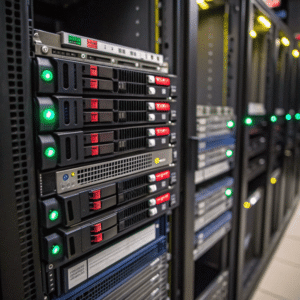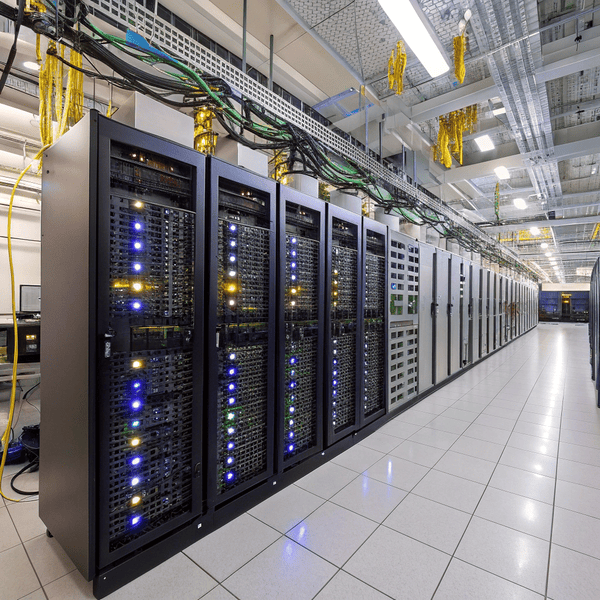When we upload photos, stream videos, or send emails, it feels like data floats in the air. In reality, it all sits on When we upload photos, stream videos, or send emails, it feels like data floats in the air[^1]. In reality, it all sits on real machines in carefully chosen places.
[^1]: Understanding this concept can help demystify how data is stored and transmitted, enhancing your tech knowledge.
All Internet data is stored in massive data centers—large, secure buildings filled with thousands of powerful servers located all over the world, managed by technology companies and providers.

The first time I saw a data center, I was surprised by how much high-tech infrastructure it took to power the websites and cloud services we use each day. Everything—from the videos you watch to work emails and even social media posts—resides in these enormous server hubs, not in the “cloud” we imagine.
Where is everything on the Internet stored?
Most people imagine data just floats “online,” but the truth is more concrete.
Everything on the Internet is stored in physical servers inside data centers, owned by companies like Google, AWS, Microsoft, and telecom providers across every continent.

Every website, file, or app you use has to live somewhere before you can access it. These Every website, file, or app you use has to live somewhere before you can access it. These servers[^1] are stacked in racks, housed in buildings with robust cooling and security. Here’s a look at how this storage breaks down:
[^1]: Understanding the types of servers can help you choose the right one for your needs.
are stacked in racks, housed in buildings with robust cooling and security. Here’s a look at how this storage breaks down:
| Storage Location | Example Companies | Type of Data Stored |
|---|---|---|
| Hyperscale data centers | Google, AWS, Microsoft | Cloud, web platforms, search |
| Regional data centers | Local telecoms, SaaS | Video streaming, business apps |
| Content delivery nodes | Akamai, Cloudflare | Web caching, fast downloads |
| Corporate on-premise | Banks, hospitals | Private/confidential data |
When I sent large project files for mold design, I always noticed transfer speeds changed depending on my client's location. That made me realize: the closer your data is to its user, the faster everything works. This is why providers set up data centers in major cities around the globe.
Where is most of the world's data stored?
With billions of users online, someone has to store all that information safely—and efficiently.
Most of the world’s data is concentrated in enormous, centralized data centers—mainly in North America, Europe, and Asia—run by tech giants for cloud and enterprise services.

Today, companies like Amazon, Google, and Microsoft dominate data storage with Today, companies like Amazon, Google, and Microsoft dominate data storage[^1] with “hyperscale” data centers—think of huge, warehouse-sized facilities, each housing tens of thousands of servers. Here’s how these locations shake out:
[^1]: Exploring the latest trends in data storage can provide insights into innovations and best practices in the industry.
” data centers—think of huge, warehouse-sized facilities, each housing tens of thousands of servers. Here’s how these locations shake out:
| Region | Share of Major Data Centers | Major Companies |
|---|---|---|
| North America | ~40% | AWS, Google, MS |
| Europe | ~20% | AWS, MS, local firms |
| Asia-Pacific | ~30% | Alibaba, Tencent |
| Rest of world | ~10% | Local providers |
A client once asked why their data was stored in a different country. It boiled down to resources, power costs, and legal rules. Operators pick locations for cheap electricity, low risk of disaster, and fast network links, not just convenience.
Where does all the data get stored?
It’s easy to imagine data floating in “the cloud.” But every byte of it sits in metal boxes, in special rooms with It’s easy to imagine data floating in “the cloud[^1].” But every byte of it sits in metal boxes, in special rooms with round-the-clock security and monitoring.
[^1]: Understanding the cloud is essential for grasping modern data storage solutions and their benefits.
and monitoring.
All data gets stored on electronic drives—usually hard drives or SSDs—packed into racks inside data centers, which use special power, cooling, and backup systems to keep your data safe and online at all times.

Data centers use layers of different storage devices. Here’s a breakdown of the main storage tech found inside most modern centers:
| Storage Type | Purpose | Pros | Cons |
|---|---|---|---|
| SSD (Solid State) | Fast access, new files | Speed, reliability | Higher cost |
| HDD (Hard Disk) | Bulk storage, backups | Cheap, high capacity | Slower than SSD |
| Tape archival | Long-term backup | Durable, cost-effective | Slow access |
| RAM/Memory | Active processing/cache | Super-fast access | Volatile, limited size |
When I needed to retrieve backup files from a client’s server, I saw firsthand how a mix of SSDs and HDDs handles live files and long-term storage together. Data centers carefully balance new fast tech with old-school drives to make everything safe—and always online.
Conclusion
Internet data does not float in space—it’s locked away on real servers in huge data centers worldwide, managed for speed, security, and nonstop availability.




